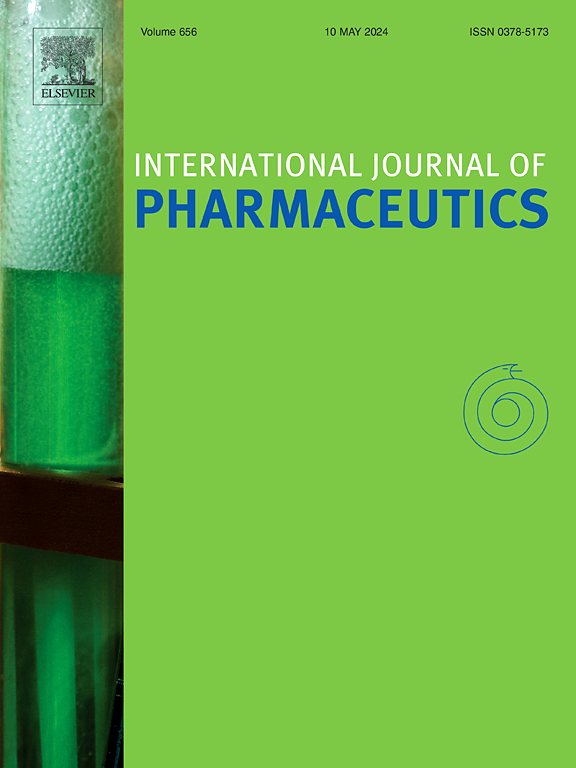Demonstrating scalability between two blender types using DEM
IF 5.3
2区 医学
Q1 PHARMACOLOGY & PHARMACY
引用次数: 0
Abstract
Powder blending is a critical step in pharmaceutical manufacturing that can impact product quality such as tablet tensile strength. This study utilized the Discrete Element Method (DEM) to investigate blending in a 5-liter mini-batch and a 2-liter Turbula blender. DEM parameters were calibrated using small-scale powder characterization tests, so that the particle behavior in the DEM simulations matches the measured behavior. The research explored the effects of blender designs and process conditions on blending and lubricant dispersion. A predictive model for tablet tensile strength was developed. The model takes the lubricant’s dispersion via the lubrication energy into account. The model is then used to predict the tablet tensile strength depending on the chosen process parameters, blending speed, duration, and fill level. DEM simulations enabled scaling between the two blenders, providing valuable insights for a semi-continuous manufacturing process based on mini-batch blending. The findings contribute to a deeper understanding of blending mechanics, offering potential enhancements in pharmaceutical manufacturing efficiency and product consistency.
利用 DEM 演示两种搅拌器之间的可扩展性。
粉末混合是制药过程中的一个关键步骤,会对产品质量(如片剂抗张强度)产生影响。本研究利用离散元素法 (DEM) 研究了 5 升迷你批次和 2 升 Turbula 混合器中的混合情况。DEM 参数通过小规模粉末表征测试进行校准,因此 DEM 模拟中的颗粒行为与测量行为相符。该研究探讨了混合器设计和工艺条件对混合和润滑剂分散的影响。开发了片剂拉伸强度预测模型。该模型考虑到了润滑剂通过润滑能进行的分散。然后,根据所选的工艺参数、混合速度、持续时间和填充水平,使用该模型预测片剂的拉伸强度。DEM 模拟实现了两种混合器之间的扩展,为基于小批量混合的半连续生产工艺提供了有价值的见解。这些发现有助于加深对混合机械的理解,为提高制药效率和产品一致性提供了可能。
本文章由计算机程序翻译,如有差异,请以英文原文为准。
求助全文
约1分钟内获得全文
求助全文
来源期刊
CiteScore
10.70
自引率
8.60%
发文量
951
审稿时长
72 days
期刊介绍:
The International Journal of Pharmaceutics is the third most cited journal in the "Pharmacy & Pharmacology" category out of 366 journals, being the true home for pharmaceutical scientists concerned with the physical, chemical and biological properties of devices and delivery systems for drugs, vaccines and biologicals, including their design, manufacture and evaluation. This includes evaluation of the properties of drugs, excipients such as surfactants and polymers and novel materials. The journal has special sections on pharmaceutical nanotechnology and personalized medicines, and publishes research papers, reviews, commentaries and letters to the editor as well as special issues.

 求助内容:
求助内容: 应助结果提醒方式:
应助结果提醒方式:


